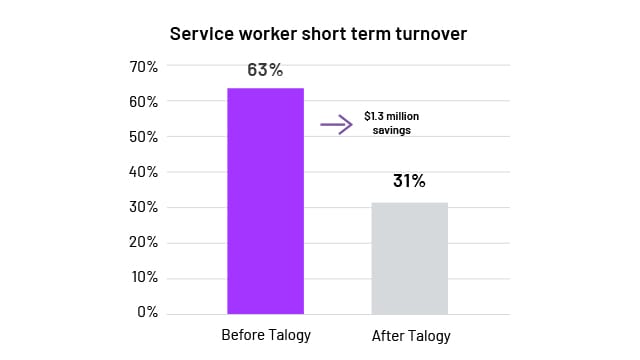Challenge
Voluntary turnover, particularly in the first year, is a good indicator of an organization’s effectiveness in hiring and assimilating staff. First year turnover in the hospital sector, at 28.3%, is significantly higher than the rest of U.S. industries at 21.5%. After their first year at a hospital, 22.2% of first year nurses leave and for some segments of the hospital workforce, turnover is often over 50% (PricewaterhouseCoopers Saratoga 2012/2013 U.S. Human Capital Effectiveness Report). The report also points out the bottom line impact. It estimates the cost of turnover as 1.5 times the base salary of an exempt employee and .5 times the base salary of a non-exempt employee. These four hospitals, part of the same health system, are located within a 15-mile radius of each other. They had a long history of turnover in service worker positions, particularly dietary, environmental services, and transporters – as high as 63%. The system had done extensive analysis and tried several strategies, with little success. In addition, hiring managers were reviewing up to 50 resumes and interviewing as many as 10 candidates to fill a single position. There had been no coordination of recruiting efforts and the four were actually competing for talent from the same pool of candidates.





